Story and Photos by ITN European Reporter Herve’ Rebollo
Salut à vous riders from around the world,
Did you know that LEONARDO DA VINCI lived and died …in France? (our friend the master artist David UHL knew it! See: https://www.uhlstudios.com/wp-content/uploads/Vitruvian-Pan-Web.jpg:).
But, why this interest for this famous Italian ? Simply because Leonardo da Vinci, a polymath of the Renaissance period, symbol of the universal spirit, l’uomo universal and scientific genius, remains renowned for his exceptional contribution in fields as diverse as art, science, anatomy, and engineering. Beyond masterful works such as the Mona Lisa, Leonardo’s Codices reveal a lesser-known aspect of his genius: his interest and in-depth study in the field of mechanics.
Among the thousands of pages of his Notebooks, Leonardo Da Vinci recorded revolutionary ideas and detailed sketches that went far beyond his time. His drawings of flying machines …
… automatons, and mechanical devices demonstrate his pioneering understanding of engineering principles.
Upon the invitation of king Francis I, he spent his last three years in France, where he died in 1519. Since his death, there has not been a time when his achievements, diverse interests, personal life, and empirical thinking have failed to incite interest and admiration, making him a frequent namesake and subject in culture.
I’d been wanting to go to Clos Lucé for a long time to see the famous castle where Leonardo da Vinci died. It wasn’t that far from Paris, and it would allow me to make the trip in one day (only 500 km/310 miles) on a Saturday of this early October.
Great! I left home at 8:00 a.m on this Saturday morning. The weather was nice and the temperature very pleasant. But, less than fifteen minutes later, less than 10 km from home, I found myself in such heavy rain, in the middle of a sudden thunderstorm, that I had to stop to find shelter under a bus stop. Couldn’t believe it!
The rain was falling very hard, leaves and tree branches were flying everywhere, I was completely soaked from head to toe and freezing cold. I might as well admit it, I didn’t know what to do and I even considered (to my great shame as a biker) turning around to go home and get a hot coffee (don’t tell anyone, I have a reputation as an intrepid biker to preserve – thank you).
Finally, I decided to get back on the road in the rain. And, three hours later (telling myself every five minutes that I should turn around to go home), completely exhausted, I made my first stop at one of those little bar I love so much in the French country-side.
The BEEF.
Right in the middle of nowhere and I hadn’t even covered half the distance yet.
Three coffees and thirty minutes later, the rain had eased off and I left the bar leaving a veritable puddle on the floor (I could see from the look on his face the bar owner hadn’t exactly appreciated my soaking wet biker performance). At this precise moment, I was more or less totally desperate. lol
And finally, His Majesty the sun remembered that I was a good person (of course I am) and decided to come to see me 10 minutes later. Lucky me!!! (but frankly, it was about time).
And it’s very humid but happy, I finally arrived in the region which was my destination.
The first road sign announcing Leonardo’s residence appeared.
The Château du Clos Lucé (or simply Clos Lucé), formerly called Manoir du Cloux, is located in the center of the city of AMBOISE, in the Loire Valley region.
Built by Hugues d’Amboise in 1471, the palace has known several famous owners such as the French king Charles VIII and Leonardo da Vinci.
Amboise lies on the banks of the river Loire.
Amboise is also the center of the local winemaking industry and is an important tourist destination.
The Château at Amboise was home to Mary Stewart, Queen of Scots, for much of her early life, being raised there at the French court of Henry II.
She arrived in France from Scotland in 1548, aged six and remained in France until 1561, when she returned to her homeland.
The city is absolutely beautiful.
Walking through the city center is like taking a trip into the past …
… in the glorious time of the Renaissance period.
The Renaissance was a cultural and intellectual movement in Europe from the 14th to the 17th century, marking the transition from the Middle Ages to modernity, characterized by a revival of classical learning, art, and humanism.
The Château du Clos Lucé (or simply Clos Lucé), formerly called Manoir du Cloux, is a large castle located in the center of Amboise city.
Built by Hugues d’Amboise in 1471, the palace has known several famous owners such as the French king Charles VIII and Leonardo da Vinci. Clos Lucé is 500 meters from the royal the castle of Amboise, to which it is connected by an underground passageway
King Charles VIII bought the home in 1490 and during this time it became known as the ‘summer house’, housing French royalty. After a few decades Francis I gave it to Leonardo da Vinci when he invited him to live in France in 1516. The ageing polymath lived his last years in this house until his death on 2 May 1519.
The death of Leonardo da Vinci, an 1818 oil painting by the French artist Jean-Auguste-Dominique Ingres, depicts Leonardo da Vinci on his deathbed at Clos Lucé on May 2, 1519 with Francis I holding his head. Another version of the painting created c. 1851 is held by the Smith College Museum, located in Northampton, Massachusetts, USA.
Thanks to its famous owners, this house today ranks as an historic monument’ and therefore is protected from demolition or reconstruction. After 1855 it became a well-known museum about Leonardo da Vinci’s life, work and memory, which was put together and directed by The Saint-Bris family, the current owners of the property.
In 1516, aged 64, Leonardo da Vinci left Rome and traveled through Italy, armed with his sketchbooks and three of his most famous paintings: Mona Lisa, The virgin and Child with St. Anne and St John the Baptist. They are now conserved in the Musée du Louvre, Paris.
Francis I gave Leonardo da Vinci a pension of 700 gold ecus, as well as buying his artwork, allowing him to live and work in the Clos Lucé. Leonardo da Vinci was appointed ‘The first painter, engineer and architect of the King’. Leonardo da Vinci was enthusiastic and productive during his years at the Clos Lucé.
He worked on numerous projects, organized feasts for the court of Amboise, and even drew the famous “Double Spiral Staircase” of the Chateau de Chambord. He is still considered as one of the most renowned artists of his time.
Despite the rumors that he would die in the king’s arms, Leonardo da Vinci passed away in his room at the Clos Lucé on May 2, 1519. He left his books, drawings, sketches and manuscripts to his beloved apprentice, Francesco Melzi.
The castle is set in the heart of a 7-hectares park, crossed by the Amasse, a tributary of the Loire river. The facade of the house is made with pink bricks and white stones and has remained almost unaltered since the Renaissance in which an old rampart walkway still remains.
The first floor bedrooms were restored in 2011 with period details and artifacts. There is a restaurant on site.
In the basement, there are 40 models that IBM made from Leonardo’s sketches and drawings, including a helicopter, as well as some 3D animations about the Italian master’s inventions, allowing the public to see them working.
The open-air museum in the garden, with its forty translucent canvasses, houses full-size models of some Da Vinci inventions, including a chariot, a multi-barrelled gun, an aerial screw and a revolving bridge.
Da Vinci is special to the French, according to François Saint Bris. “He lived a long time in France and he died here … And ‘La Joconde’ [Mona Lisa] is in France. So … for us, he’s a little French.”
Alright, it was time to leave Leonard’s house and return to downtown Amboise to explore the charming narrow streets of Amboise.
And of course, having a coffee under the sun on a typical French bar terrace
And you know what? It was 3 PM and I was still completely soaked (and I’m afraid, with a little odor of old wet dog).
This city is so beautiful
But it is time to return home now, along the magnificent Loire River.
Crossing amazing typical French villages, which allows me to take beautiful photos.
And, on the way back, completely by chance, I had an incredible encounter… but I will tell you this story in a future post, be patient.
See ya soon on the road, who knows?!?
Hervé, your French biker friend.





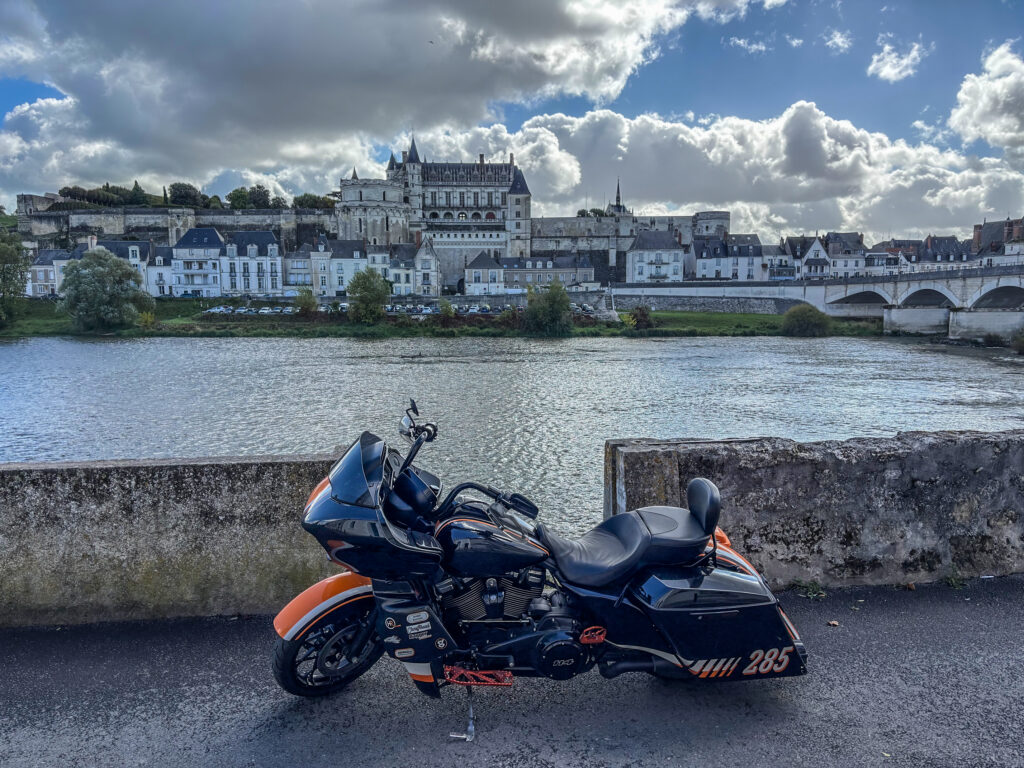
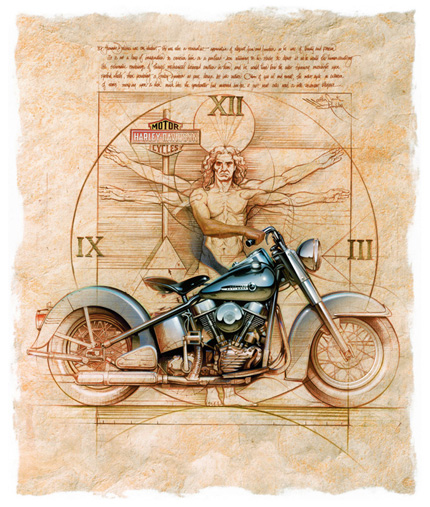
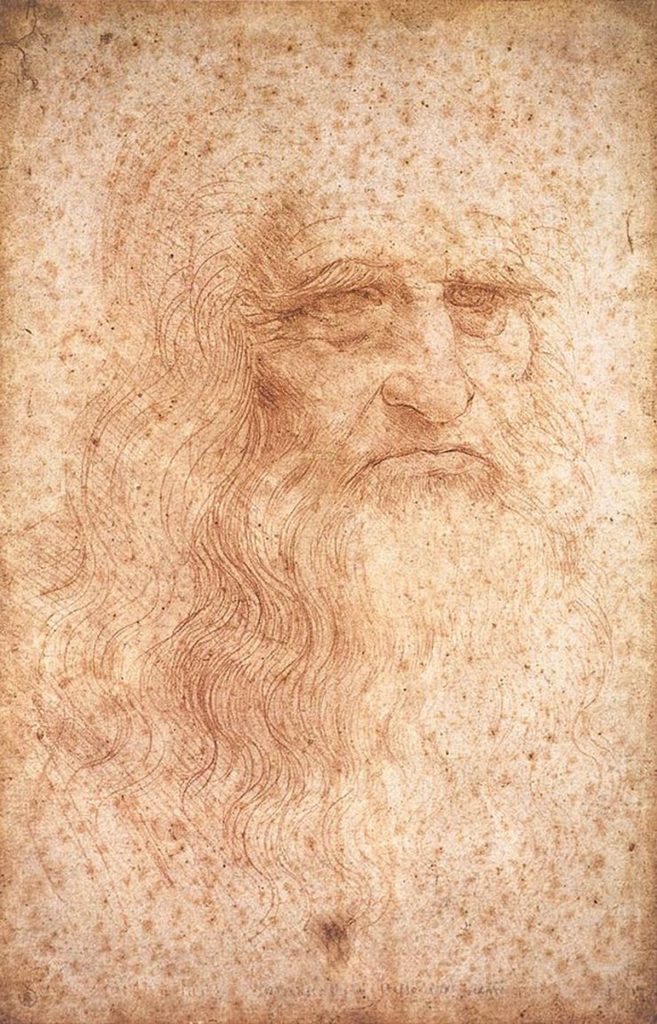


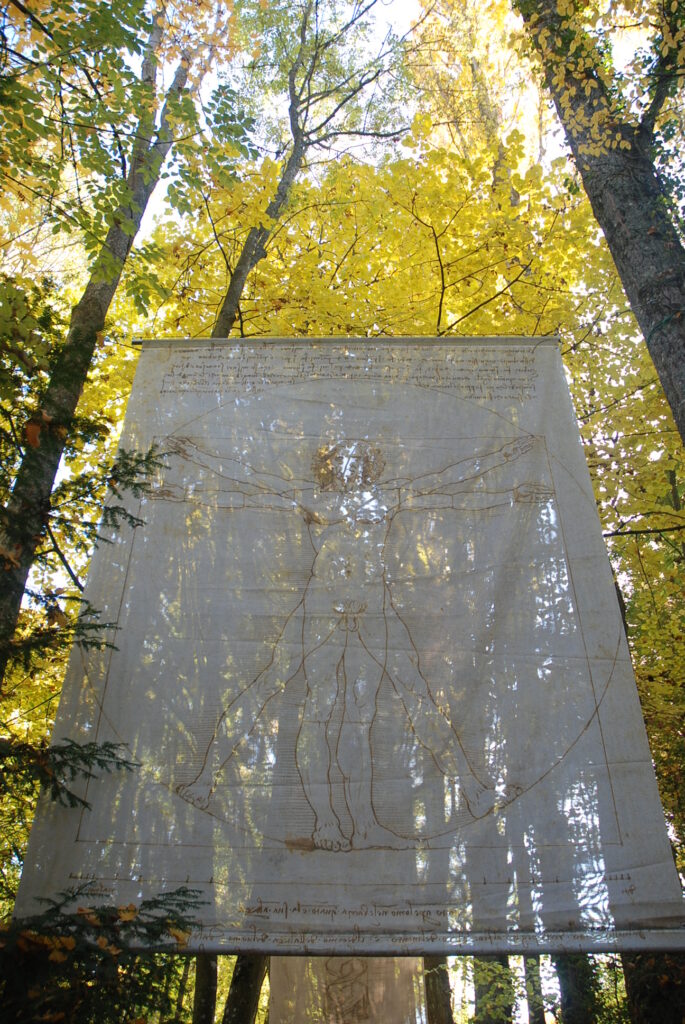
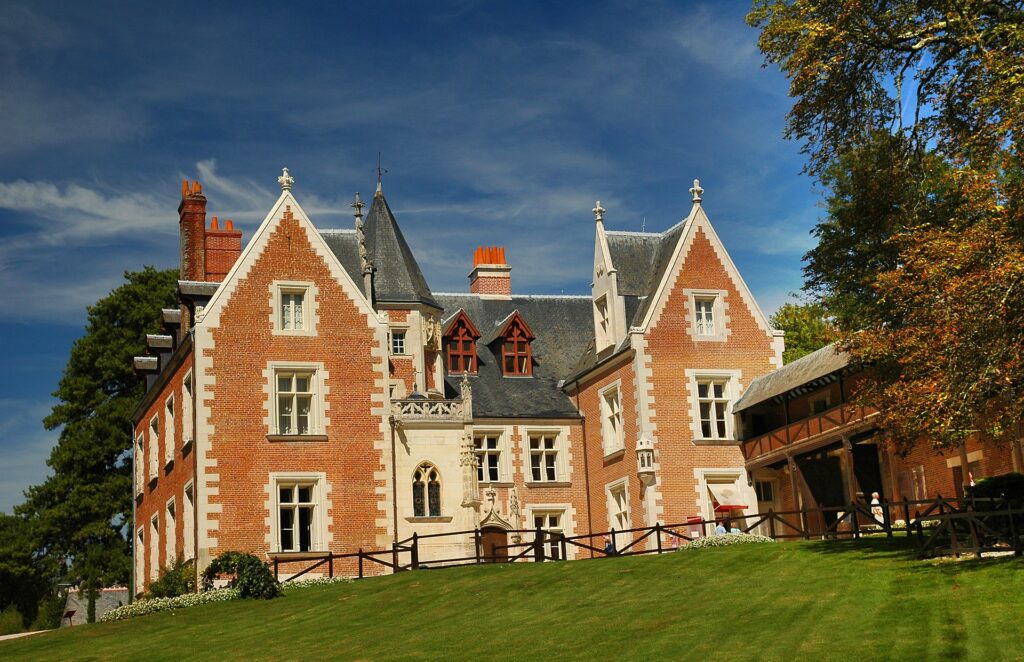

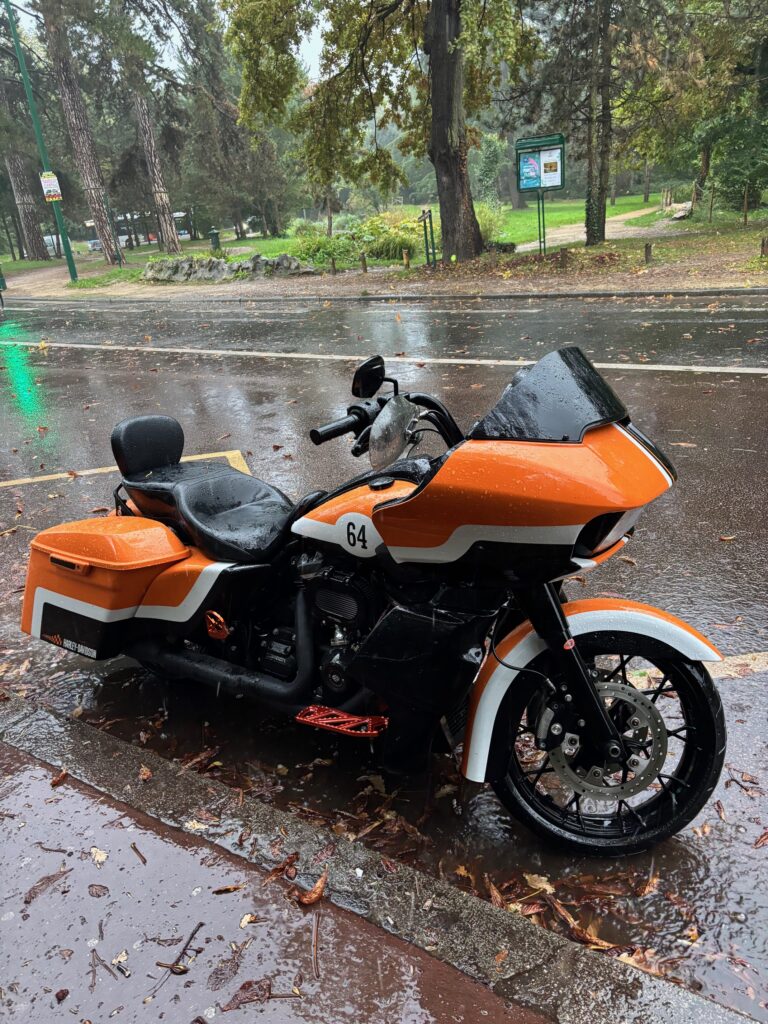
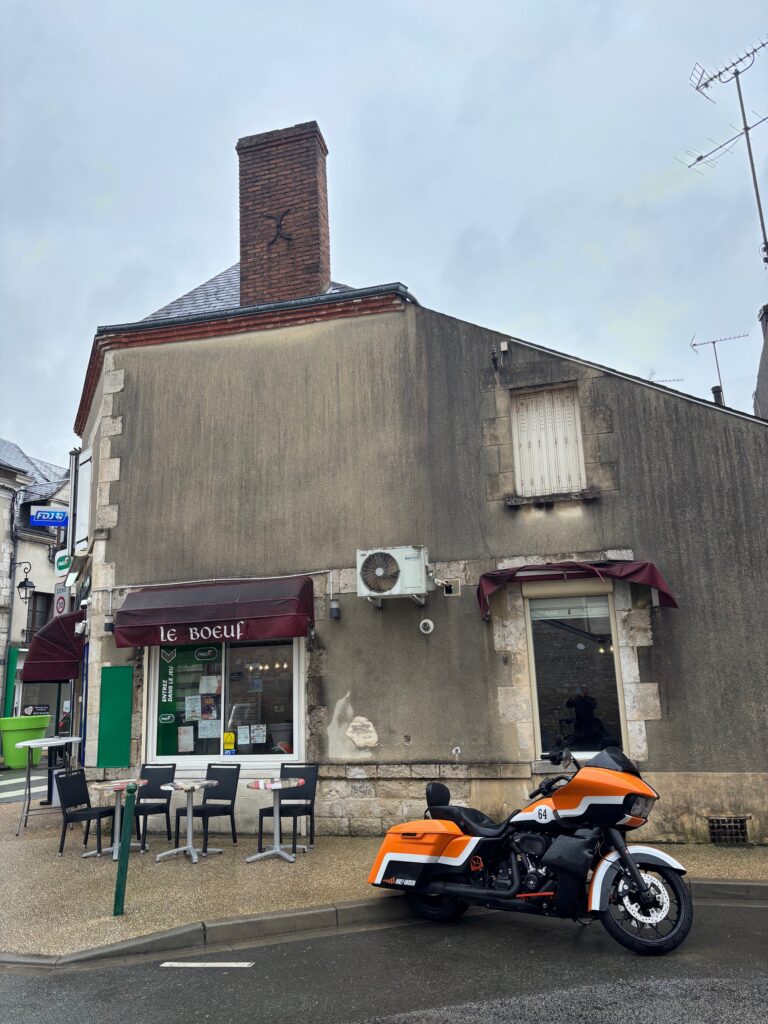
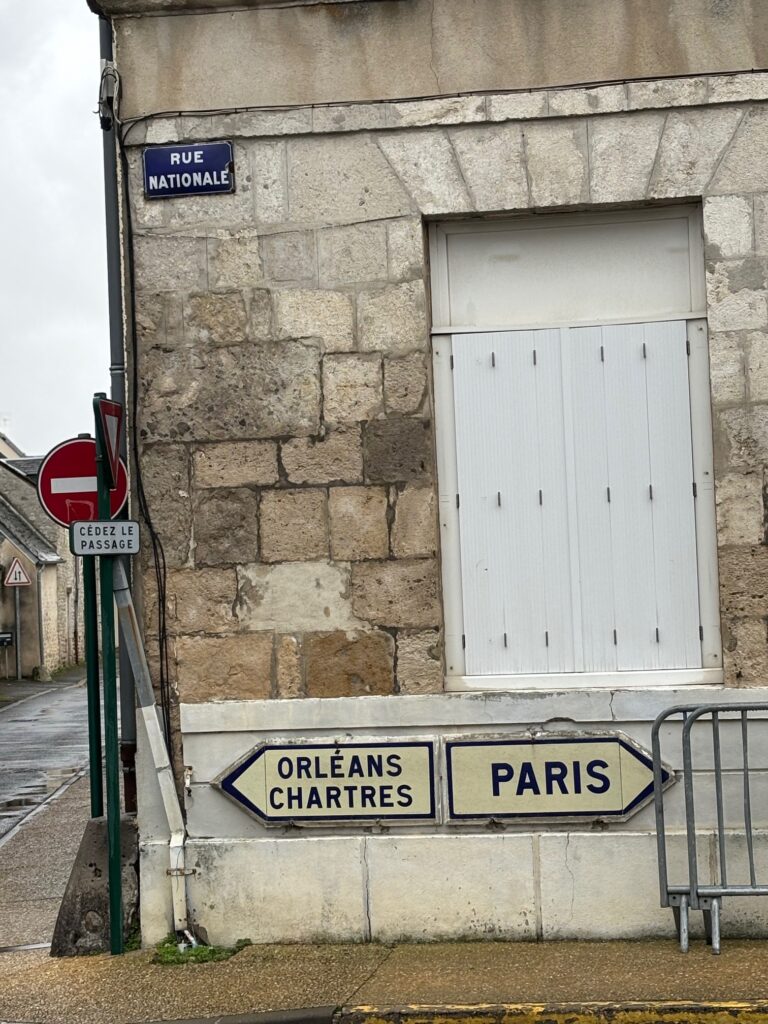
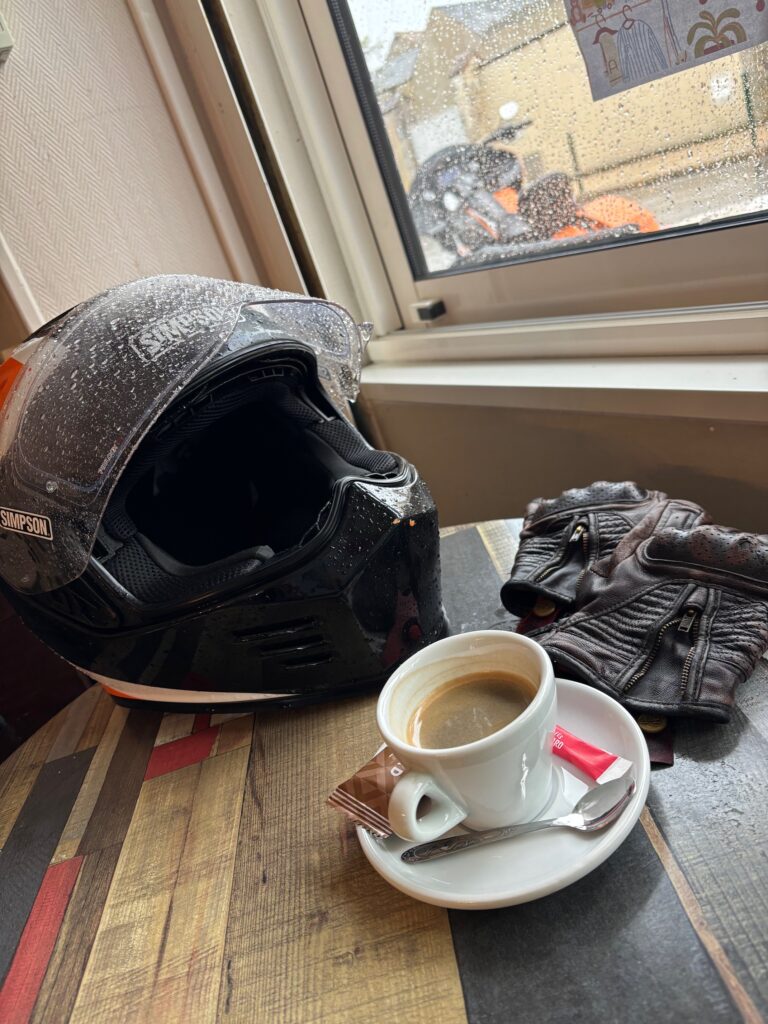
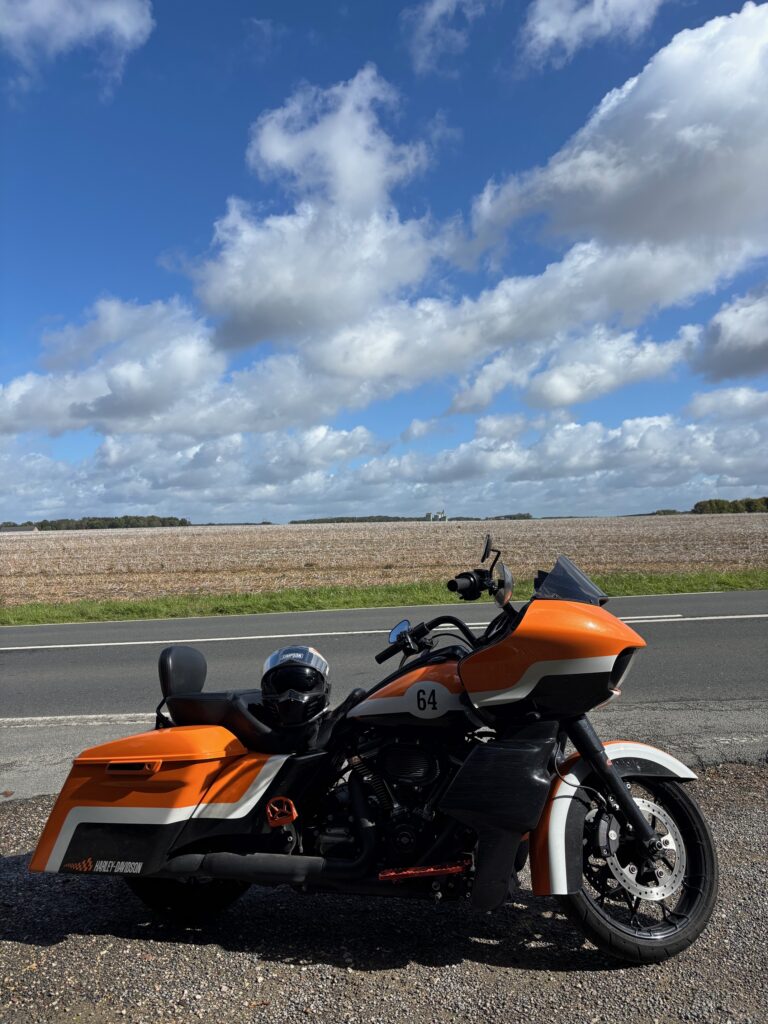
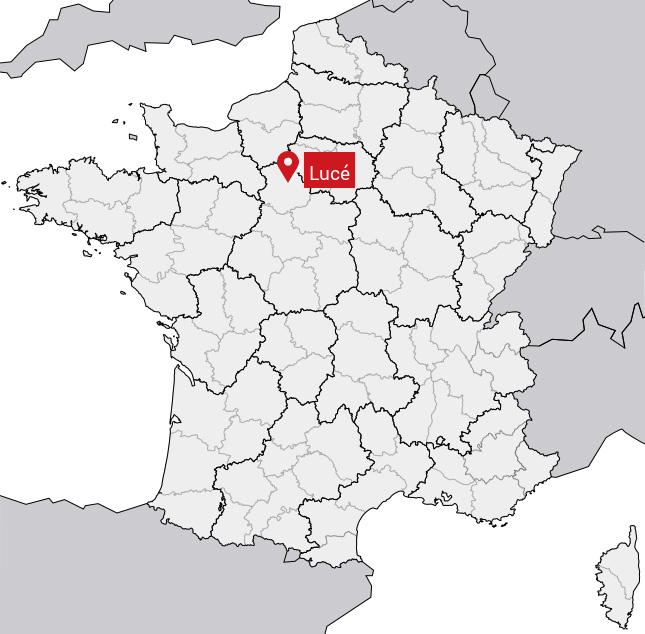
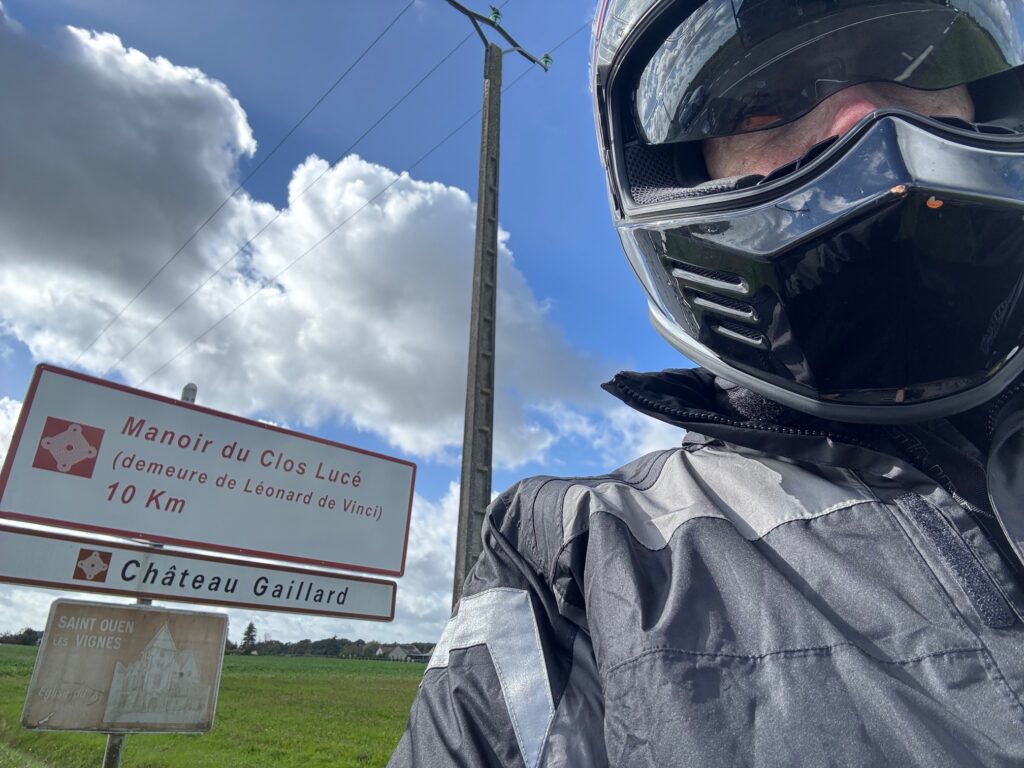
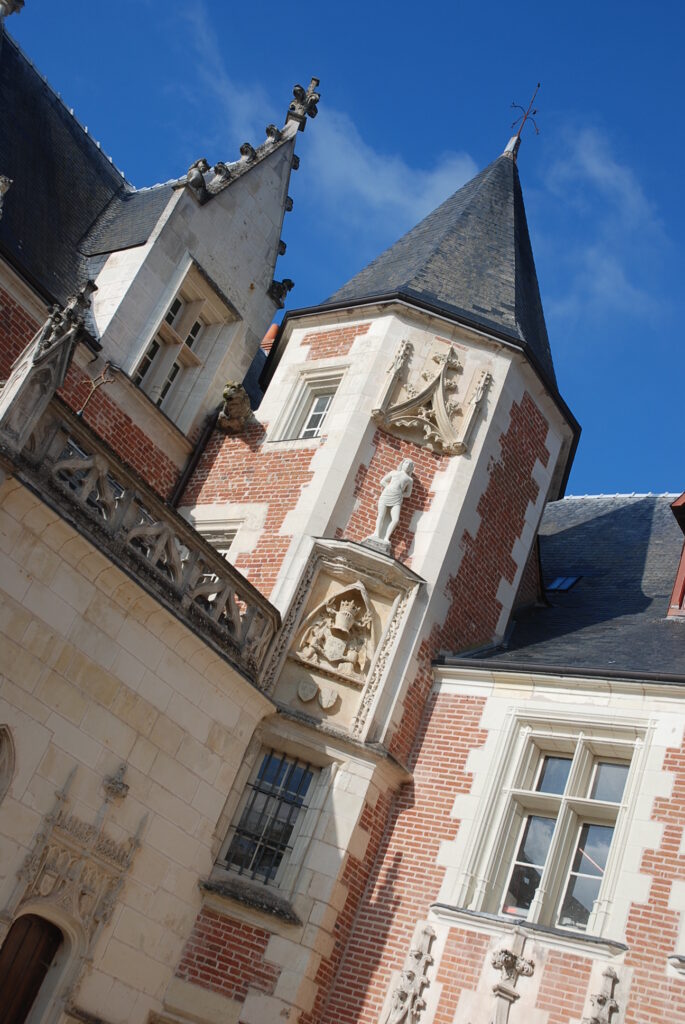

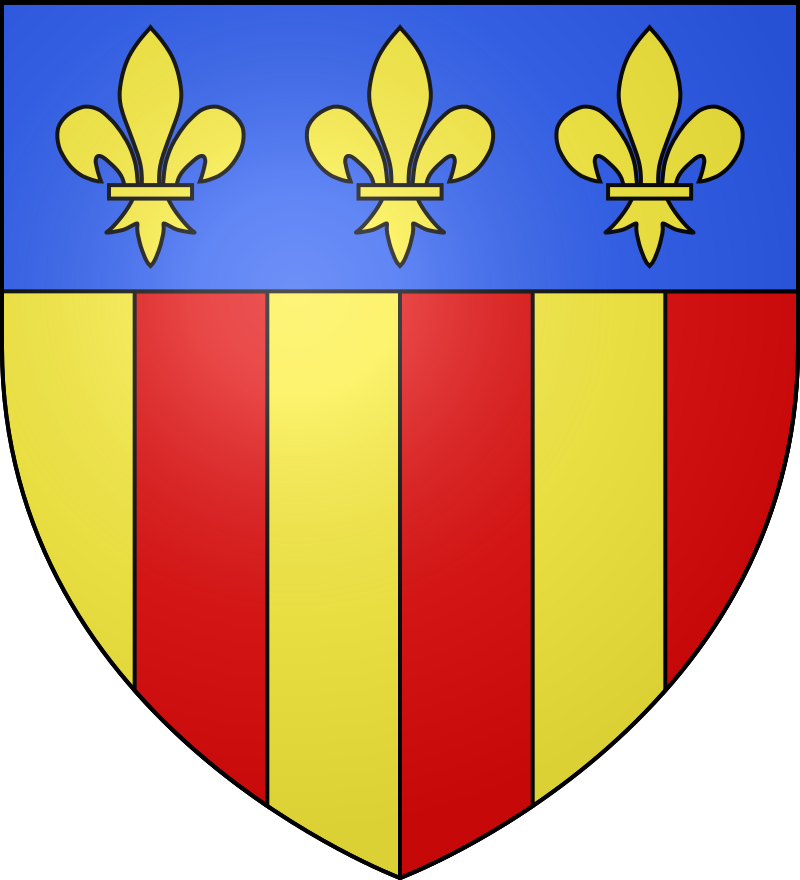
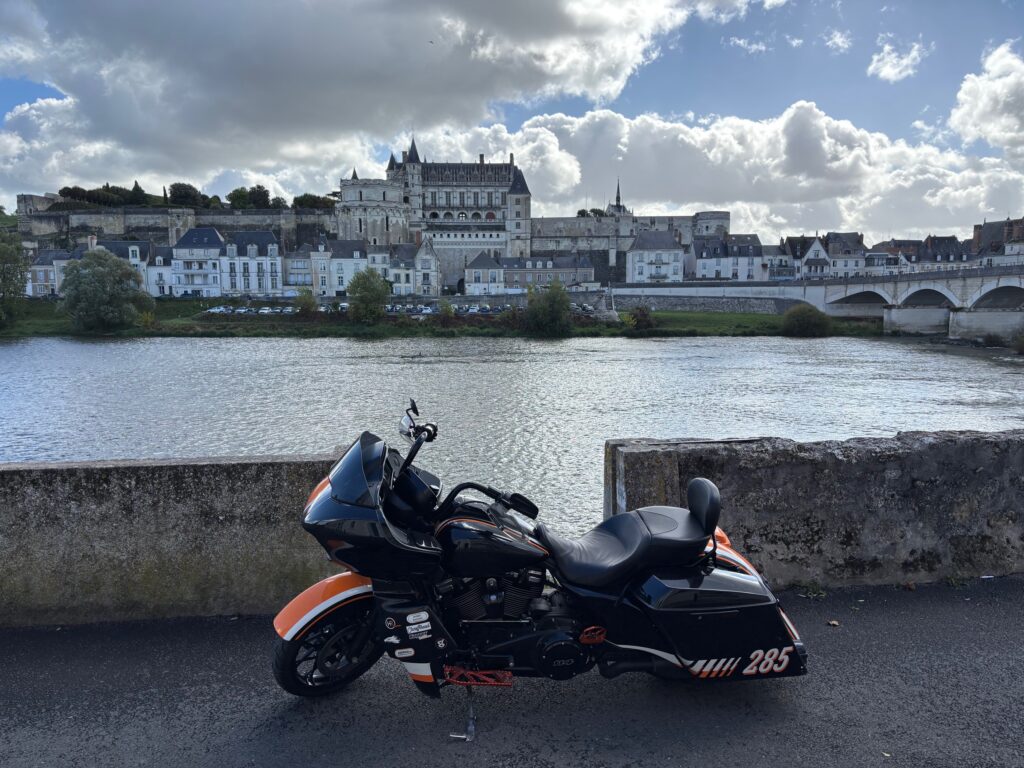
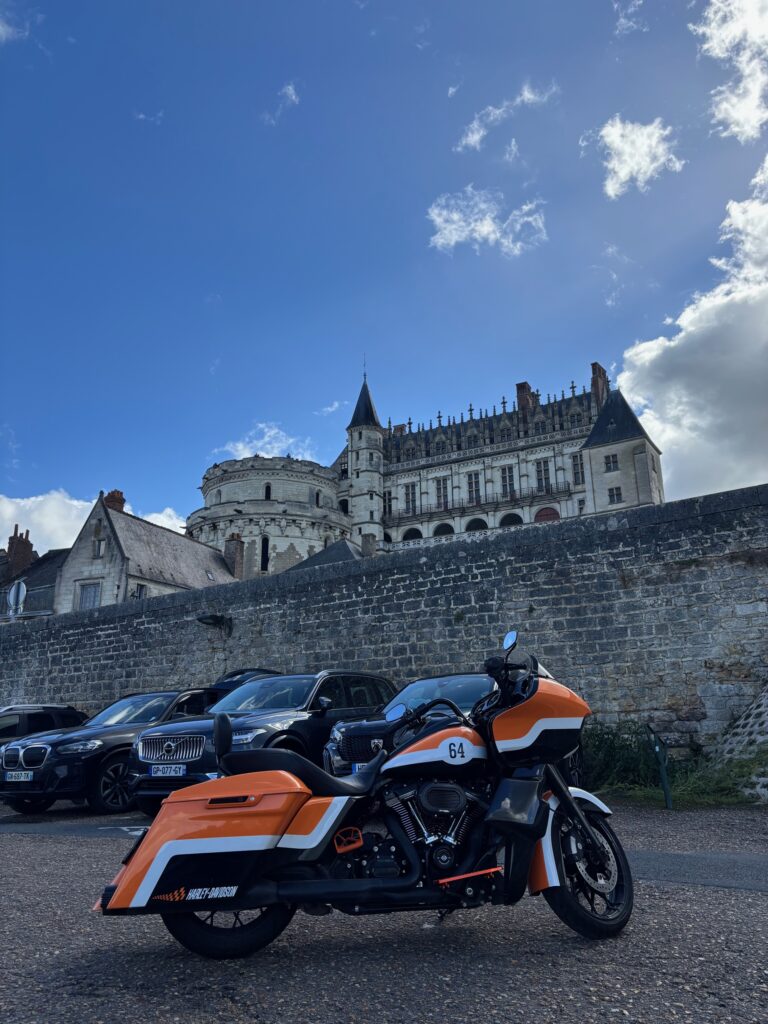
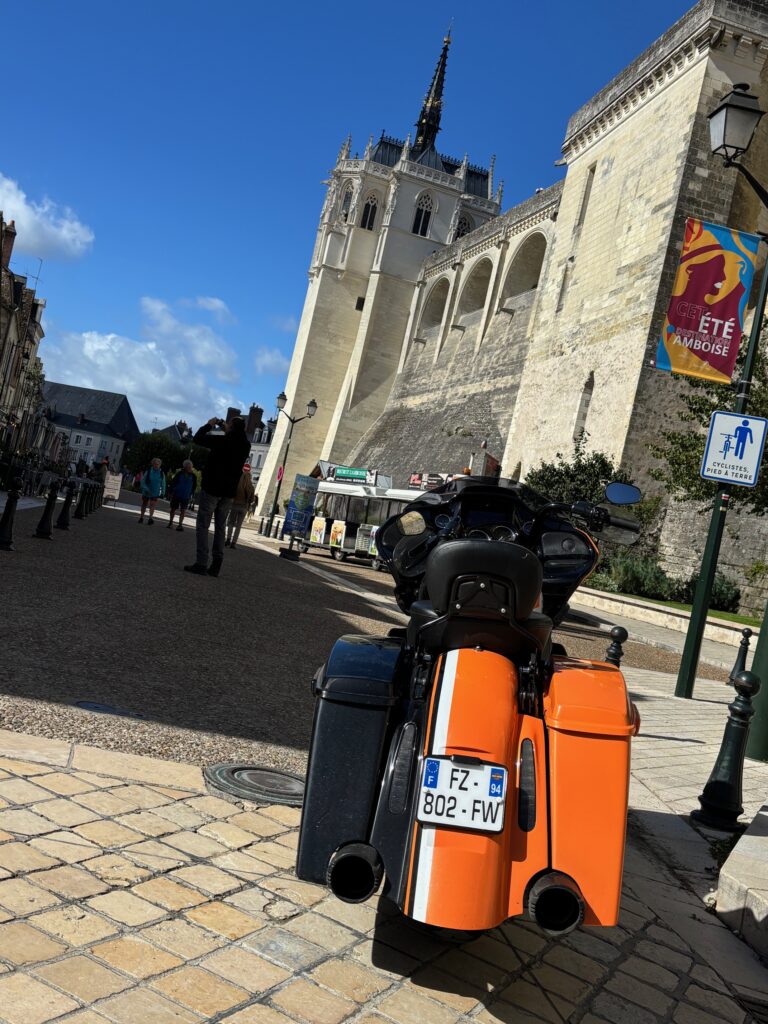
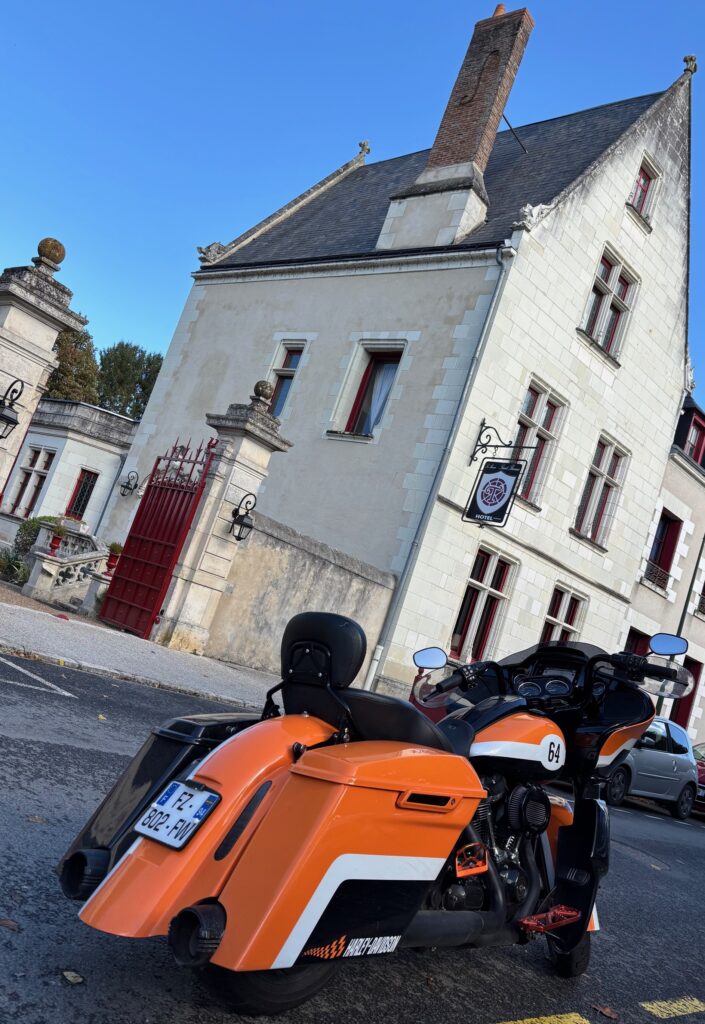
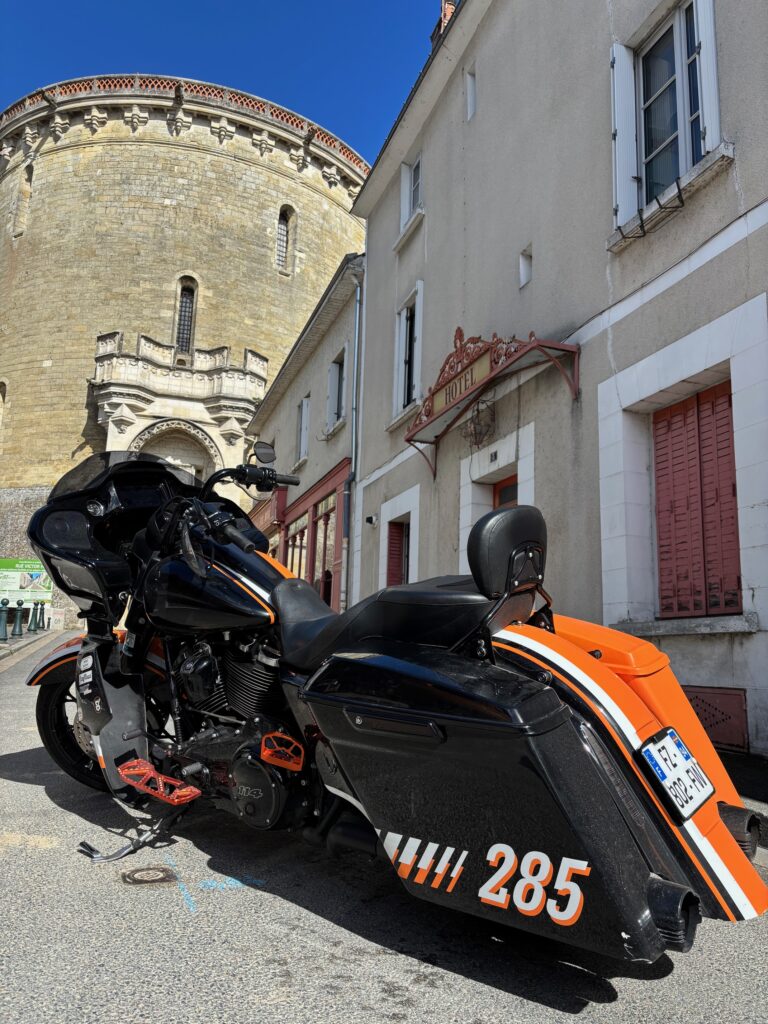

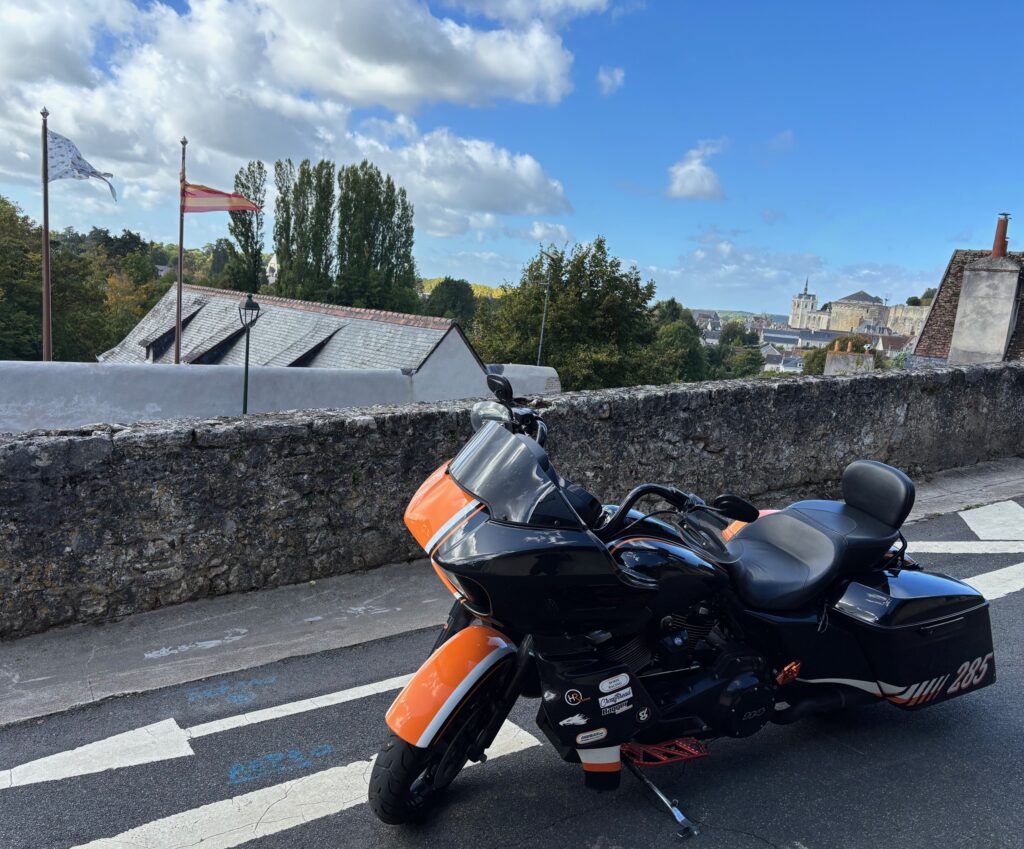

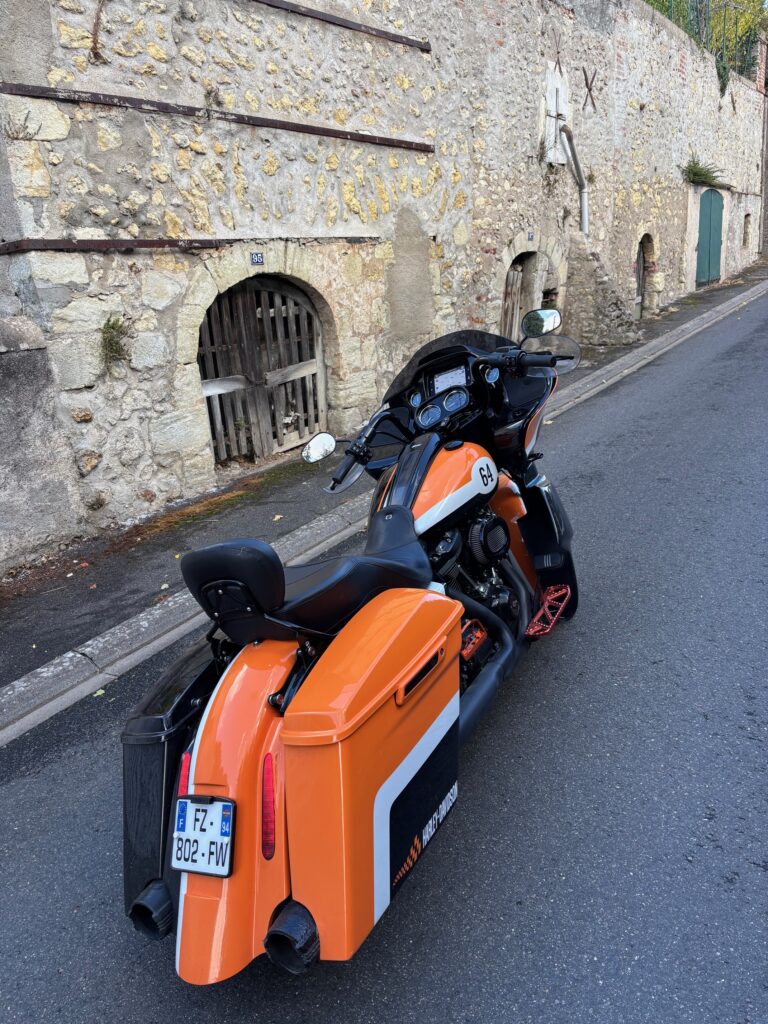
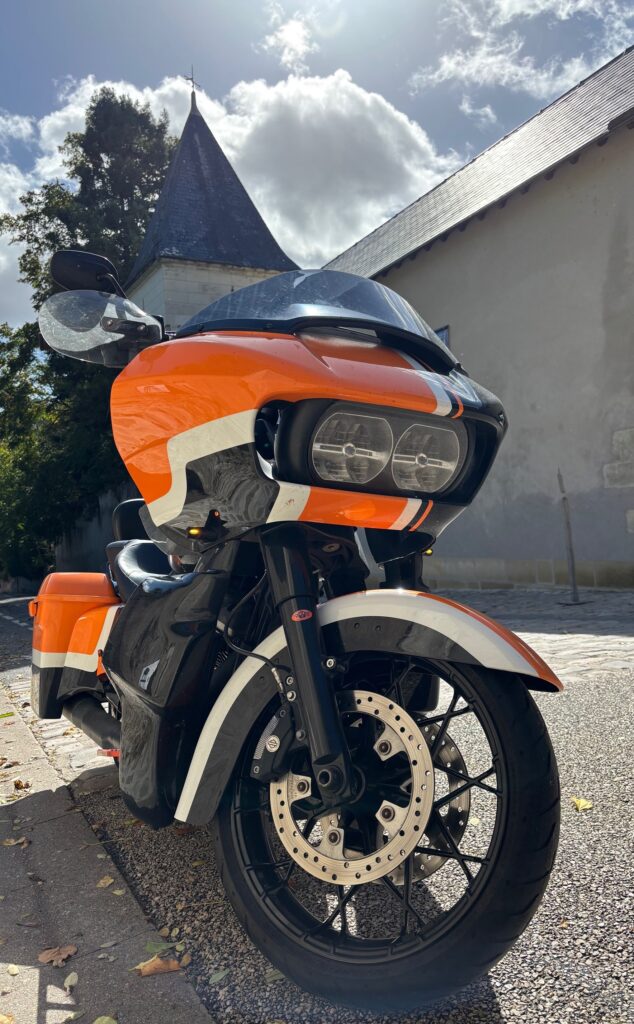
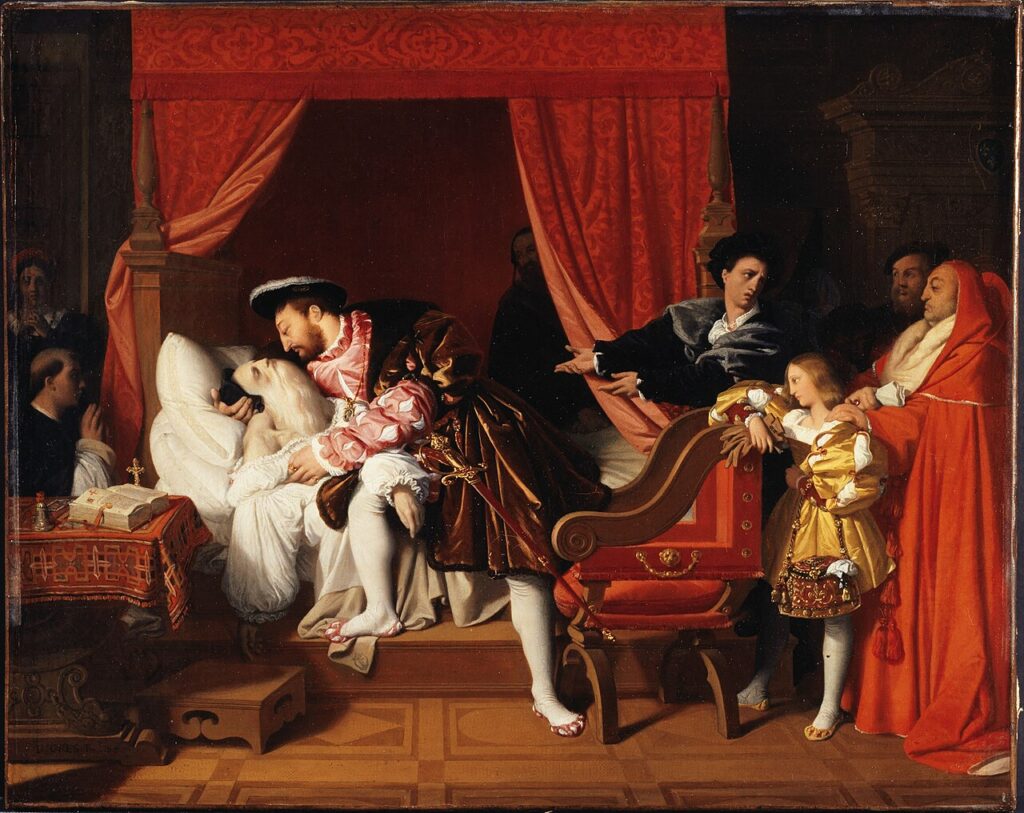
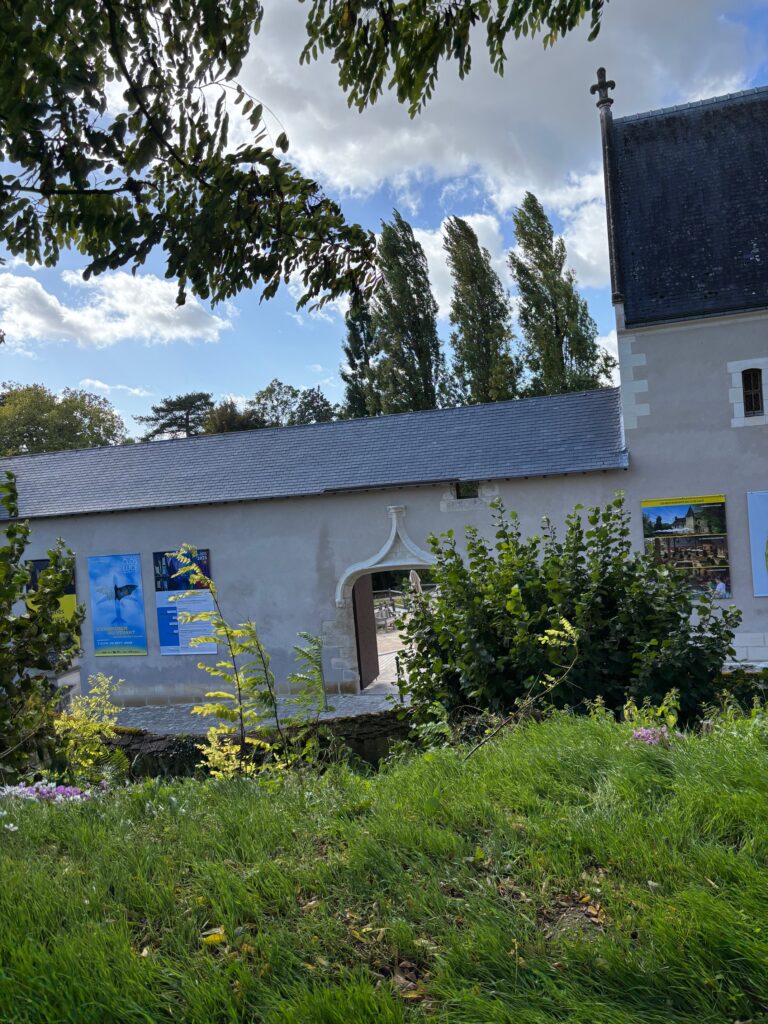
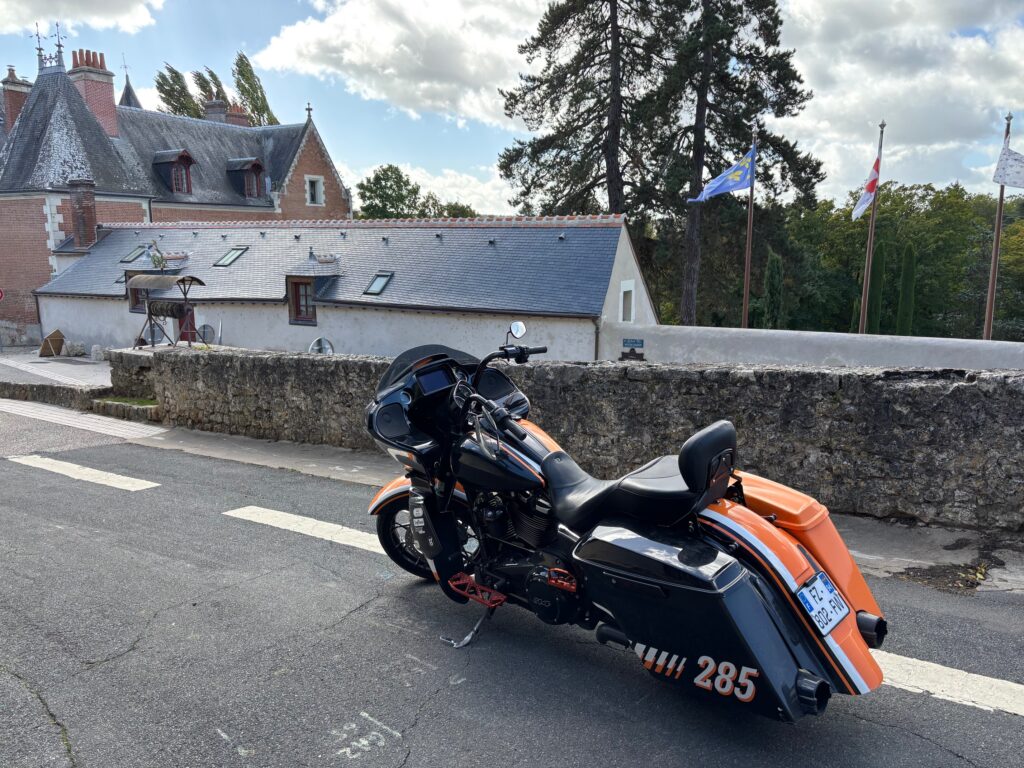

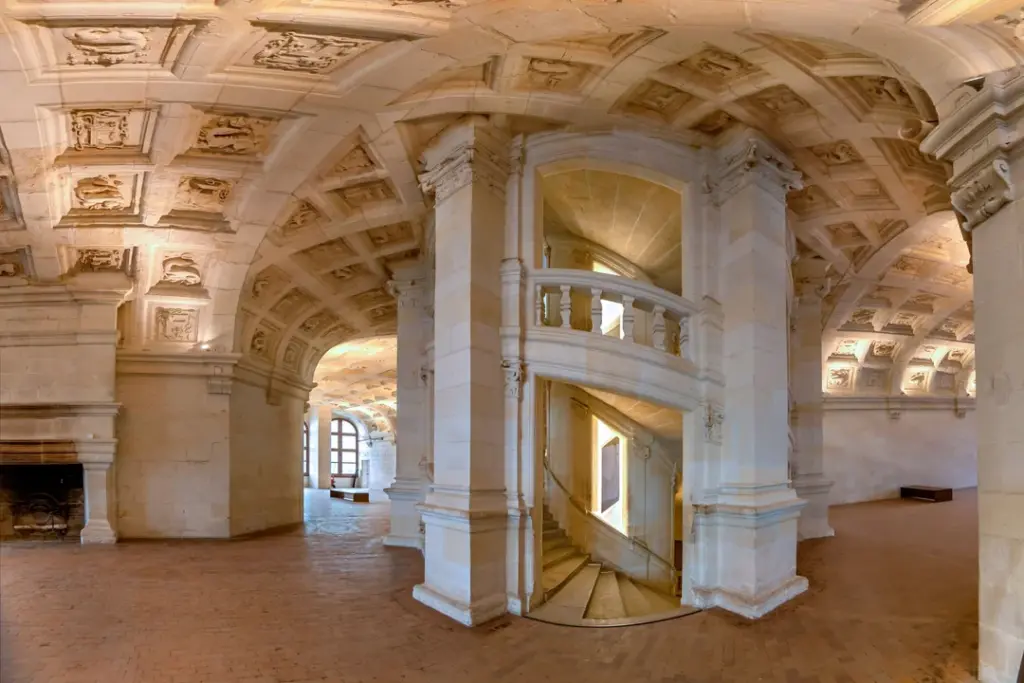
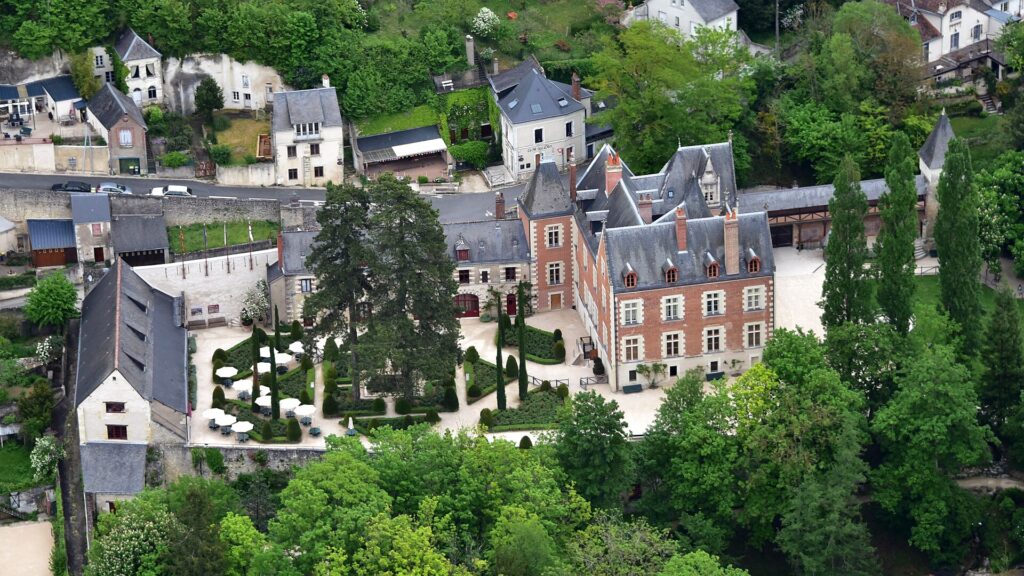
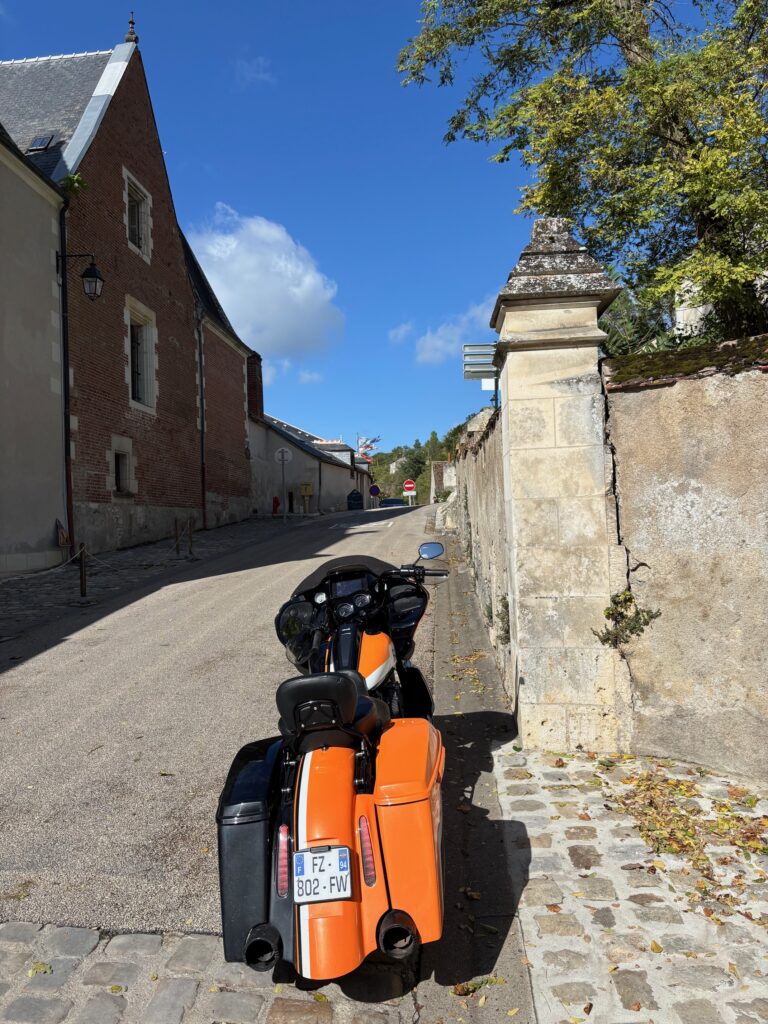
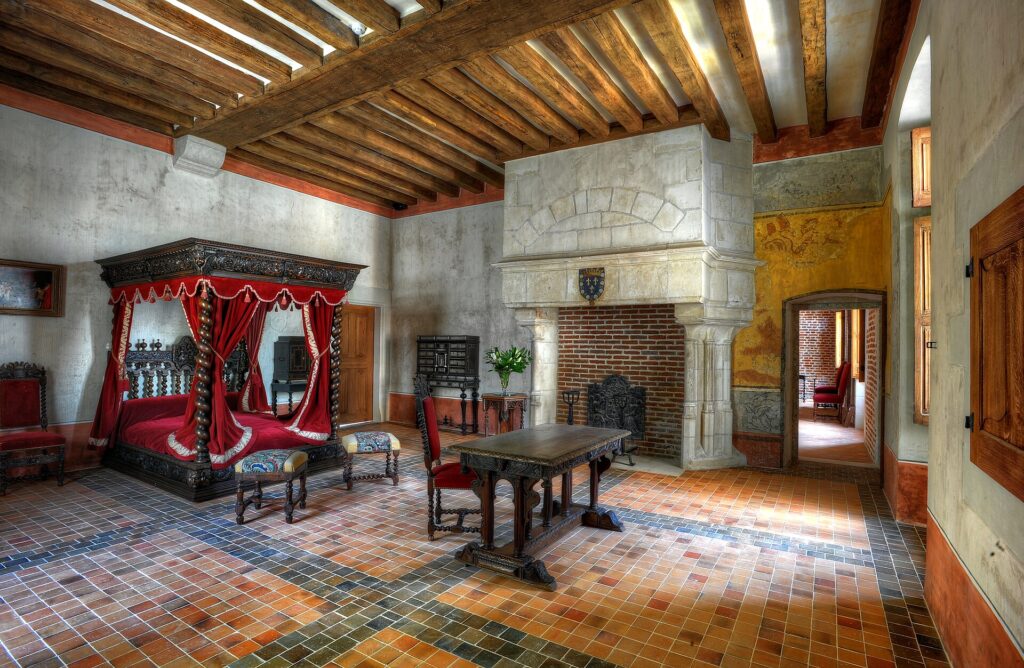
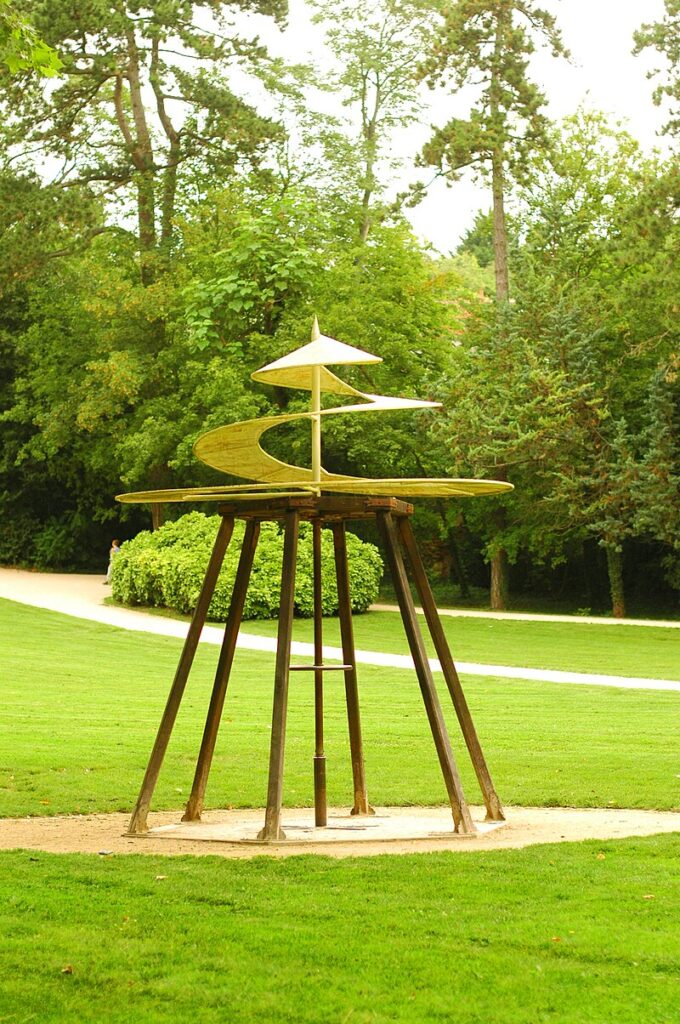

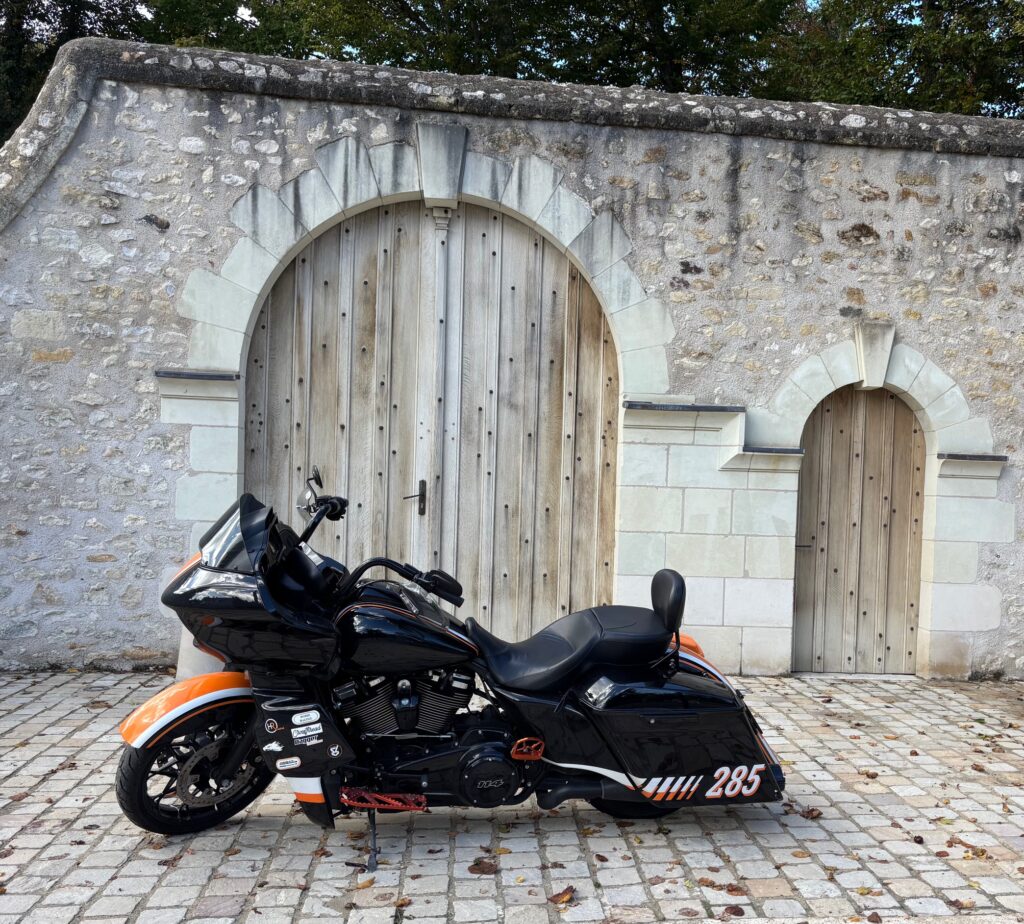

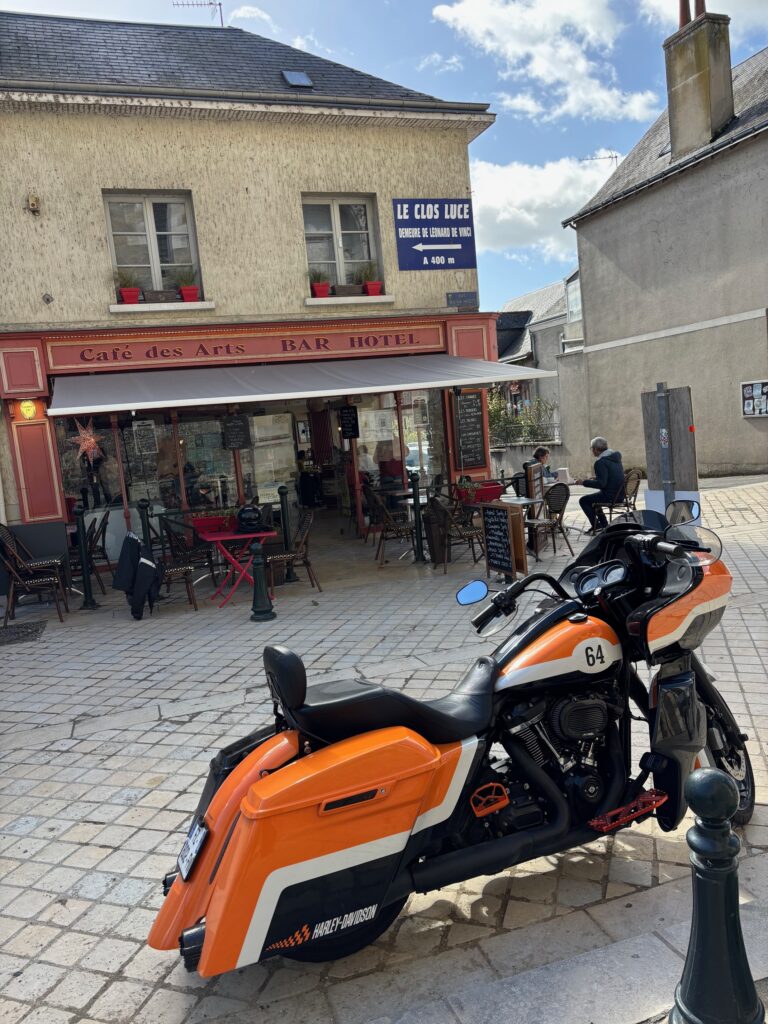
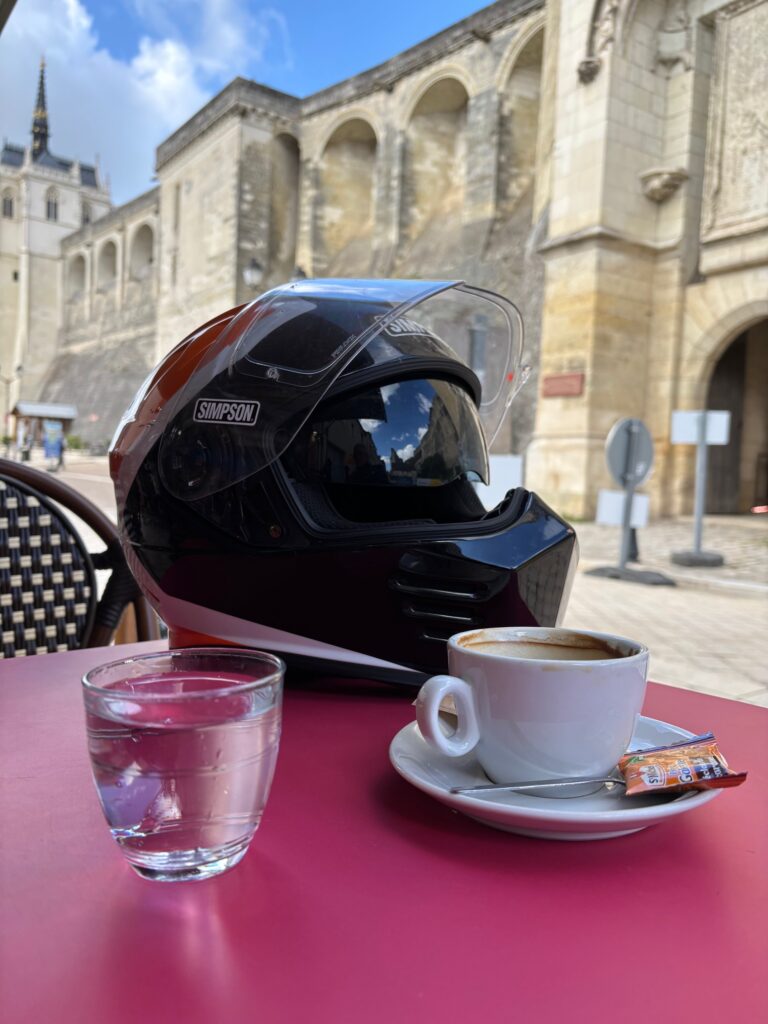
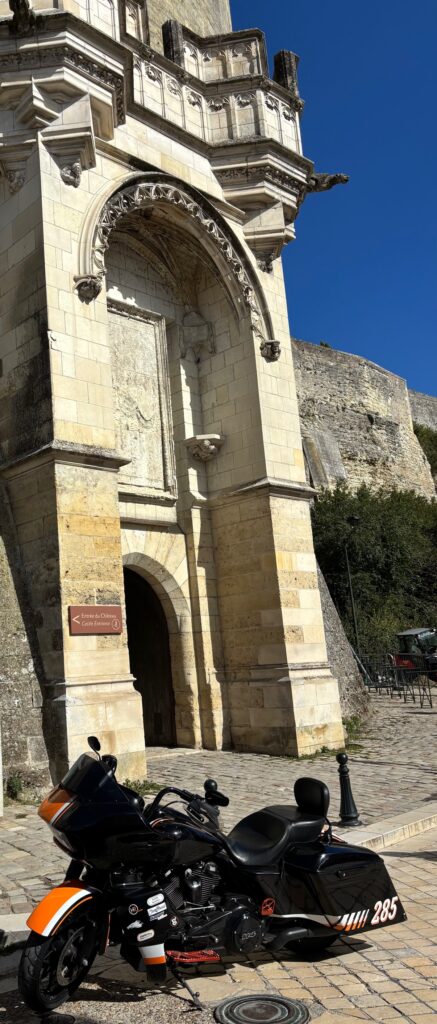
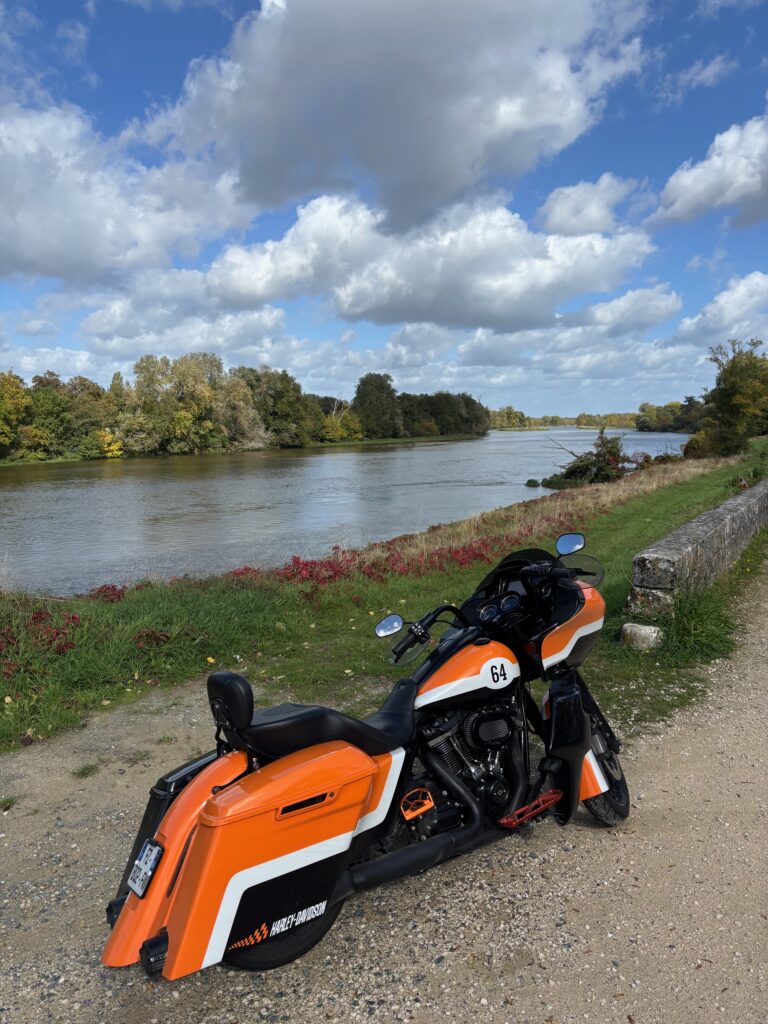

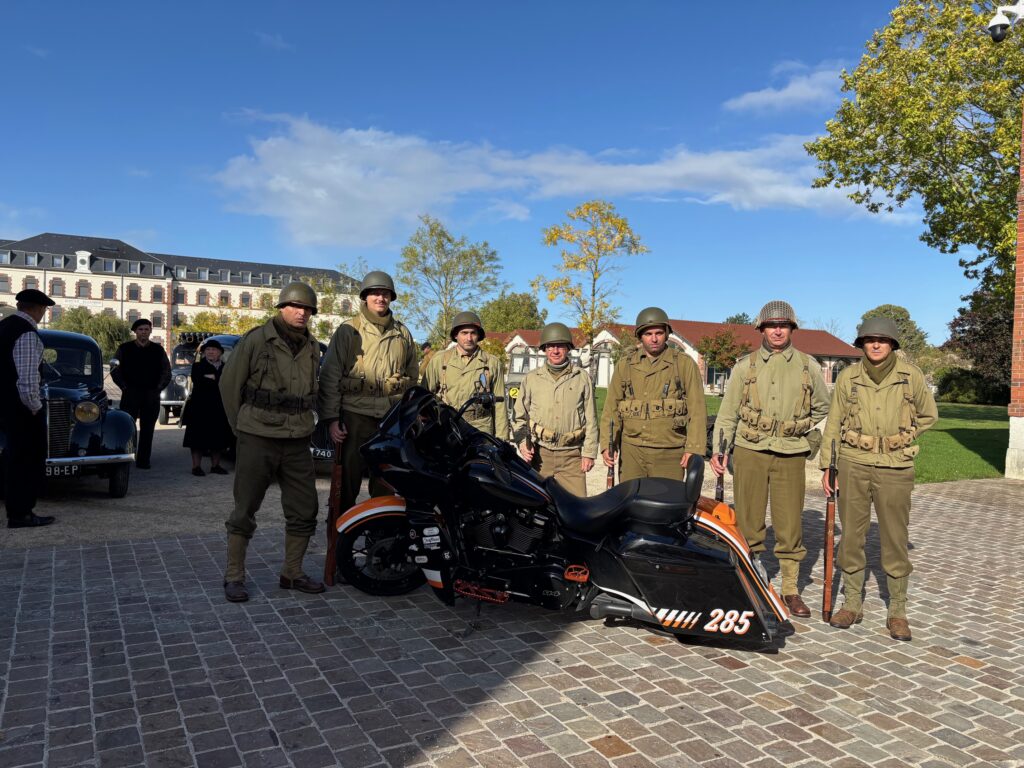
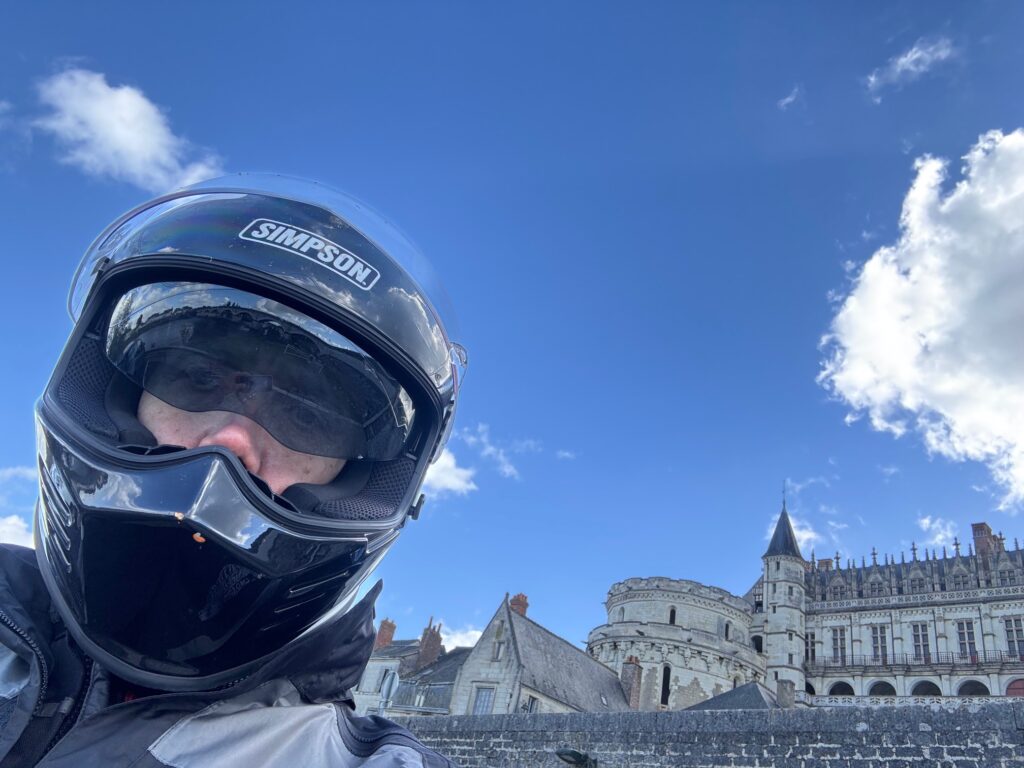
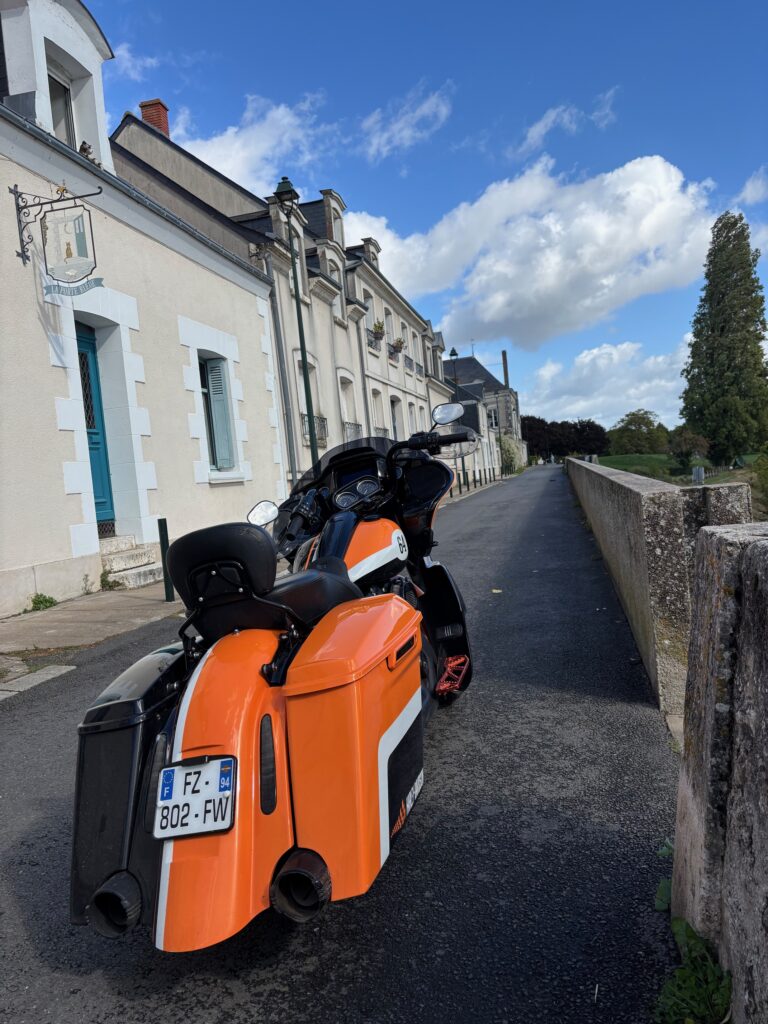
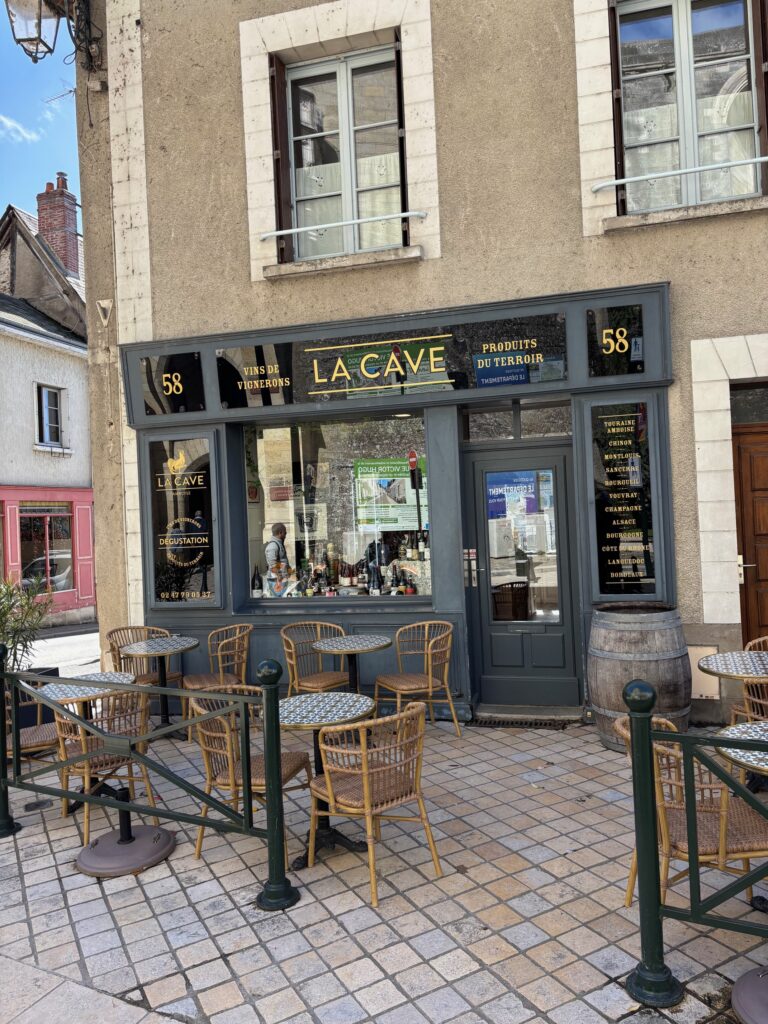
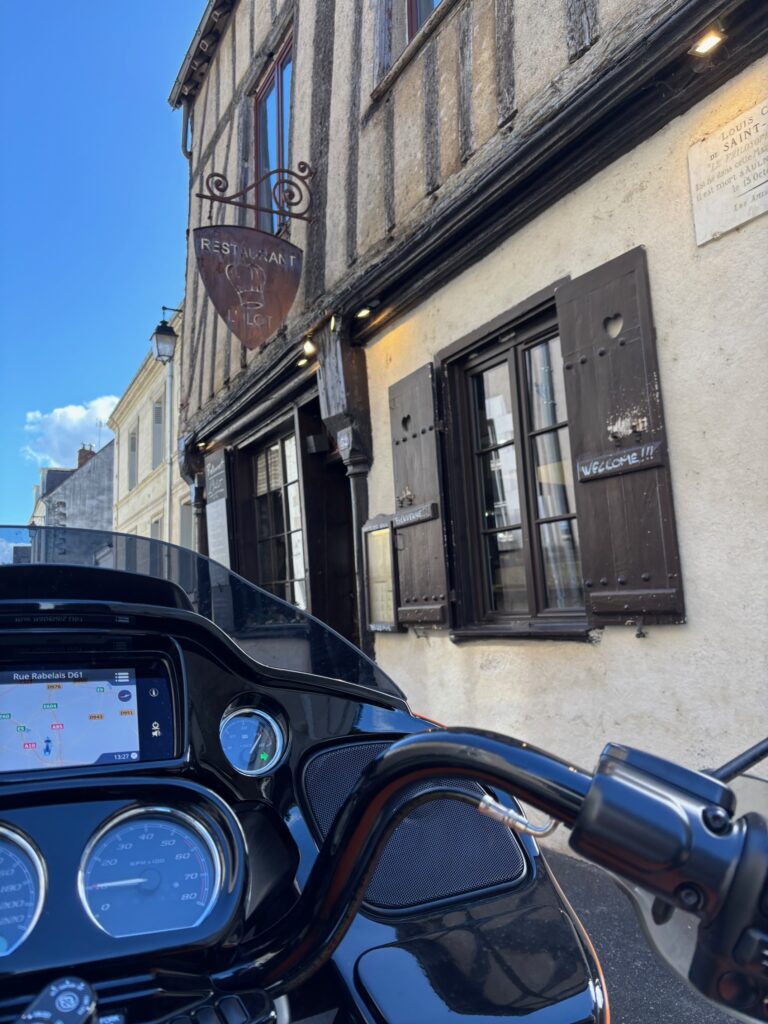

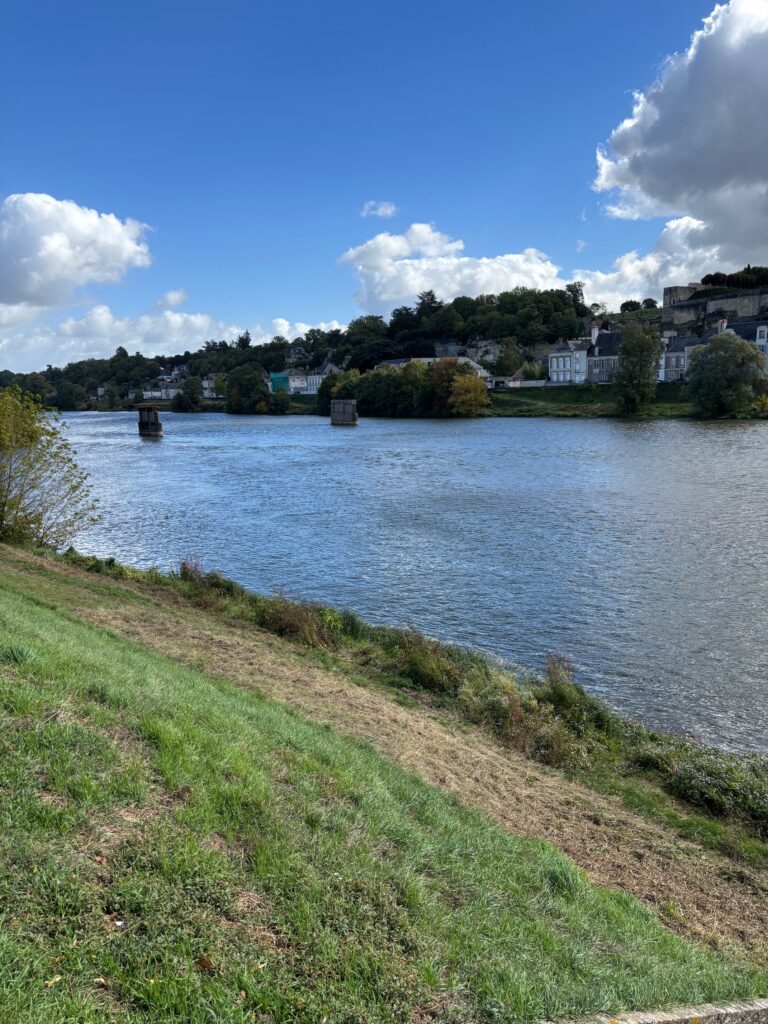
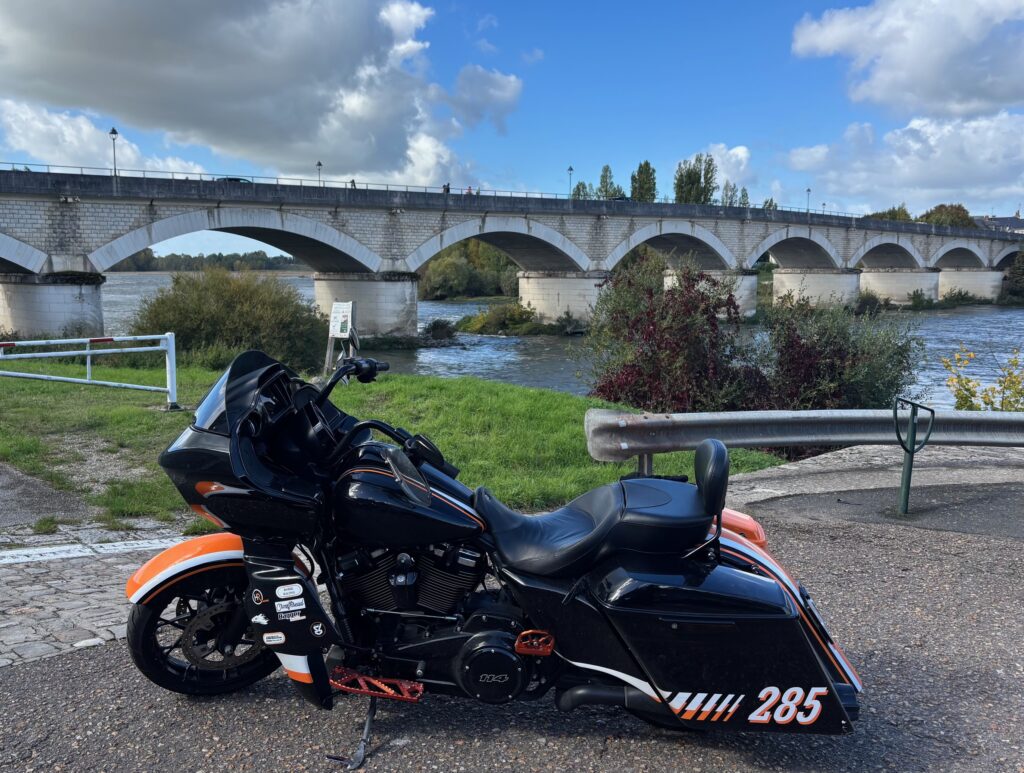
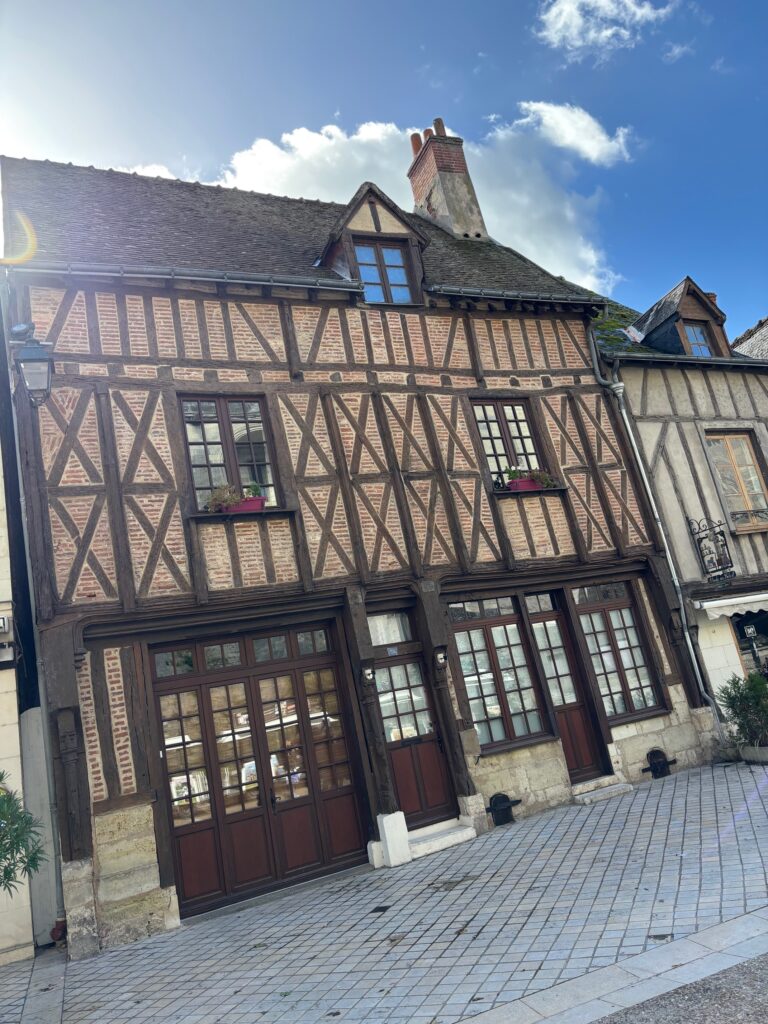




More Stories
RIDE TO BOOZ
RIDE TO THE VILLAGE CALLED HEDGEHOG
RIDE TO THE GALLO-ROMAN SITE IN THE CENTER OF FRANCE